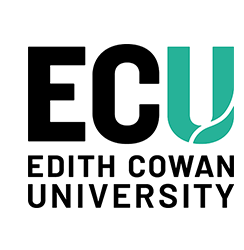Author Identifier (ORCID)
Andrew J. Woo: https://orcid.org/0000-0003-1198-6373
Abstract
Resistance to multi-tyrosine kinase inhibitors (TKI) is a major clinical concern in advanced hepatocellular carcinoma (HCC). Herein, we aimed to uncover the mechanisms underlying pan-TKI resistance and to identify potential therapeutic targets. We used multiple TKI-resistant HCC cell lines to identify caveolin-1 (CAV1) as a key driver of therapeutic resistance. CAV1 downregulation induced apoptosis, inhibited metastasis and restored TKI sensitivity in both inherent and acquired TKI-resistant HCC cells. Mechanistically, in acquired TKI-resistant cells aberrant CAV1/STAT3/P70S6K signalling is required for their survival, motility, and invasiveness. CAV1 inhibition reduced expression of dormancy regulators E-cadherin, RAC1 and p21, enhanced cancer stemness markers, and disrupted downstream STAT3/P70S6K and AMPKα signalling pathways, prompting cancer cells to exit from dormancy and initiate autophagy-induced cell death. Furthermore, selective inhibition of AXL and FGFR4 downstream of the CAV1 pathway sensitized TKI-resistant cells to sorafenib and lenvatinib, respectively. In addition, microRNA-7-5p (miR-7) was identified as an endogenous regulator of CAV1; and miR-7's inhibitory effect on CAV1 and FGFR4 suppressed the STAT3/P70S6K pathway, promoted autophagy and triggered apoptosis in lenvatinib-resistant cells. Combination therapy using either lenvatinib or sorafenib and selective CAV1 inhibitors (e.g., siCAV1/miR-7), or AXL/FGFR4 inhibitors (e.g., BGB324/BLU9931) effectively overcame pan-TKI resistance. In HCC patient datasets, elevated CAV1 mRNA was observed in sorafenib non-responders, and single cell RNA-sequencing of HCC patient tumours revealed a rare population of CAV1+ cancer cells associated with recurrence. High CAV1 expression was specific to HBV+ HCC patients and independently predicted poor survival. Further, targeting of CAV1, AXL or FGFR4 effectively overcame TKI resistance in HCC patient derived organoids (PDOs). Our findings highlight a previously unrecognized role for CAV1-driven signalling in sustaining tumour dormancy, a critical and challenging therapeutic barrier underlying recurrence and pan-TKI resistance in HCC. Therapeutically targeting these pathways offer a promising and novel strategy to eliminate dormant tumour cells, thereby overcoming resistance and improving treatment outcomes.
Document Type
Journal Article
Date of Publication
7-25-2025
Volume
16
Issue
1
PubMed ID
40715090
Publication Title
Cell Death Disease
Publisher
Nature
School
Centre for Precision Health
RAS ID
82684
Funders
The Cancer Council Western Australia / National Health and Medical Research Council / Cancer Council NSW / McCusker Foundation Fellowship / The Liver Cancer Collaborative / The MACA ECR Award 2022 / The Heart Foundation Future Leader Fellowship
Creative Commons License

This work is licensed under a Creative Commons Attribution 4.0 License.
First Page
561


Comments
Kabir, T. D., Beck, S., Stuart, L. M., Li, J., Hou, R., Liu, P., Margolius, S., Kim, C., Choi, Y. S., Bastow, E. R., Beveridge, D. J., Spalding, L., Li, Z., Ginhoux, F., Chow, P., Phillips, M., Redfern, A. D., Yeoh, G. C., Forrest, A., . . . Leedman, P. J. (2025). Inhibition of the caveolin-1 pathway promotes apoptosis and overcomes pan-tyrosine kinase inhibitor resistance in hepatocellular carcinoma. Cell Death and Disease, 16. https://doi.org/10.1038/s41419-025-07887-4